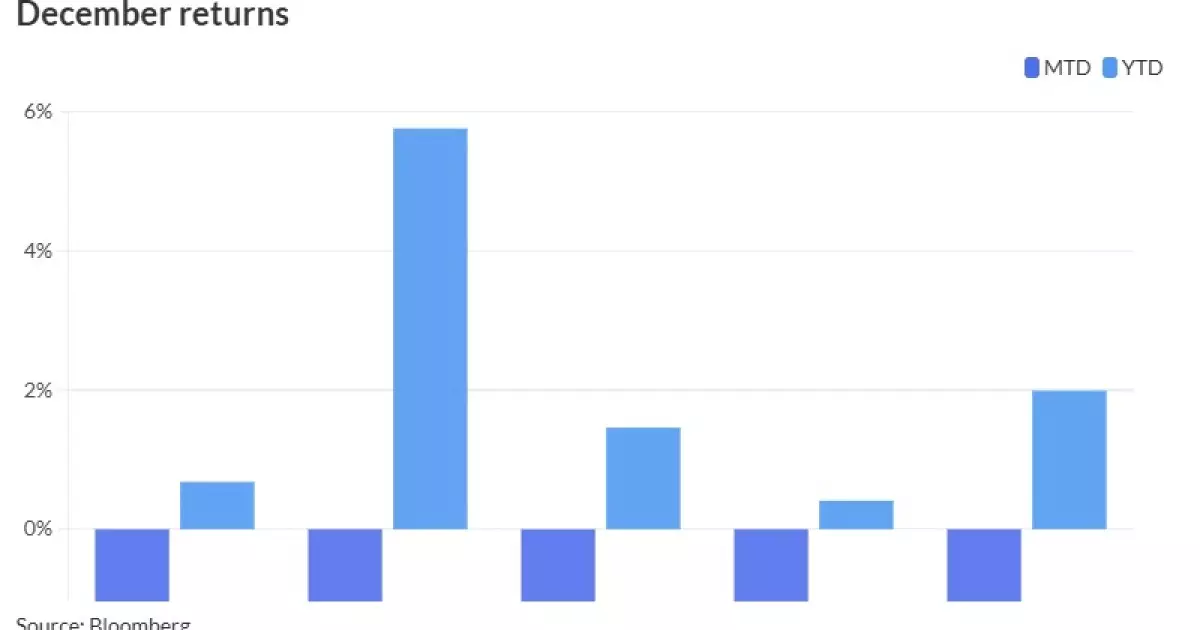As the municipal bond market navigates complex economic indicators and the Federal Reserve’s evolving postures, recent trends underscore a nuanced environment for investors. With a backdrop of fluctuating U.S. Treasury yields and moderate inflation figures, municipalities are experiencing notable shifts in performance and investor sentiment. This analysis delves into the underlying factors influencing the municipal bond market while assessing the implications for future investment strategies.
Recent developments indicate that the municipal bond market has been relatively resilient, buoyed by slightly improved U.S. Treasury yields following a less-than-predicted inflation report. Olu Sonola, the head of U.S. economic research at Fitch Ratings, suggests that while this month’s inflation numbers appear manageable, they are unlikely to sway the Federal Reserve’s hawkish stance. The expectation is for the Fed to remain cautious, monitoring international trade policies and immigration impacts before making further rate adjustments.
Moreover, the Treasury yields witnessed a descent of two to five basis points as the session closed, concurrently leading to a marginal uptick in municipal bonds. The abrupt shift in the Fed’s policy required a recalibration across the macro rates market, thereby instigating a bear flattening of the Treasury curve—a scenario where long-term rates fall more than short-term rates. According to analysts, this dynamic necessitates a defensive approach for investors, advising them to hold off until the Treasury market stabilizes, reflecting ongoing uncertainty in bond pricing.
Municipal Bond Performance Analysis
Despite the positive movements in Treasury yields, municipalities have faced significant challenges. As of December, the Bloomberg Municipal Index showed a concerning dip of 1.82%, slicing overall gains for the year down to a mere 0.68%. Furthermore, high-yield municipal bonds have fared even worse, with a 2.18% decline this month, while taxable municipals are trailing with losses of 2.56%. These trends separate shorter-term indices, which remain partially in the green, demonstrating the variances in performance across bond categories.
Mikhail Foux, from Barclays, points out the persistent pressure on the municipal market, with yields experiencing a sharp rise of around 15 basis points, bringing them perilously close to six-month peak levels. Historically, a yield spike tending toward the 4.5-5% range has attracted buyers; however, parameters have shifted this time, contributing to increased municipal ratios instead of the expected investor engagement. This atypical behavior raises alarms over the prevailing uncertainties that have affected overall demand.
The prevailing sentiment amongst investors appears poised for caution, as evidenced by recent outflows observed in municipal bond mutual funds. According to LSEG Lipper data, there was a notable exodus of $857.1 million from these funds for the week ending December 18. Subsequent daily reports indicated further withdrawals, signaling a potential retreat from the market at a time when consistency and stability are critical.
Investors’ decisions to scale back exposure seem to stem partly from tax-related strategies, alongside reactions to shifting Treasury rates. Notably, within the current year, inflows into municipal funds have dipped modestly, tracking at $41.4 billion—just above the threshold of prior years but concentrated primarily in long-term duration and diverse credit quality strategies. The high-yield municipal funds, in particular, stand out with a remarkable 13% inflow relative to their aggregate assets, contrasting starkly with the meager 4% for investment-grade counterparts. This dichotomy sheds light on shifting investor preferences amid varied risk appetites.
Looking Ahead: Strategies for Investors
As the calendar approaches the New Year, bond market predictions are rife with uncertainties. Analysts, including Foux, forecast a tumultuous January, driven by December’s disappointing market performance. However, he also emphasizes the potential for high-grade tax-exempt levels to offer appealing entry points, given forthcoming cash flows that might stabilize valuations.
The lack of substantial issuances in the current month further complicates the landscape, with forecasted visibility at $2.4 billion, compelling investors to reevaluate their strategies and risk exposures. Looking ahead, incorporating hedging mechanisms may serve as a viable tactic to safeguard post-election gains, particularly if the 10-year Treasury yield continues floating above 4.50%.
As the municipal bond market grapples with inflationary pressures, fluctuating interest rates, and a wary investor landscape, the importance of a strategic approach cannot be overstated. By remaining vigilant to these economic indicators and adjusting strategies accordingly, investors can position themselves to not only survive but thrive in this tumultuous environment.

